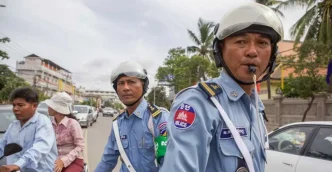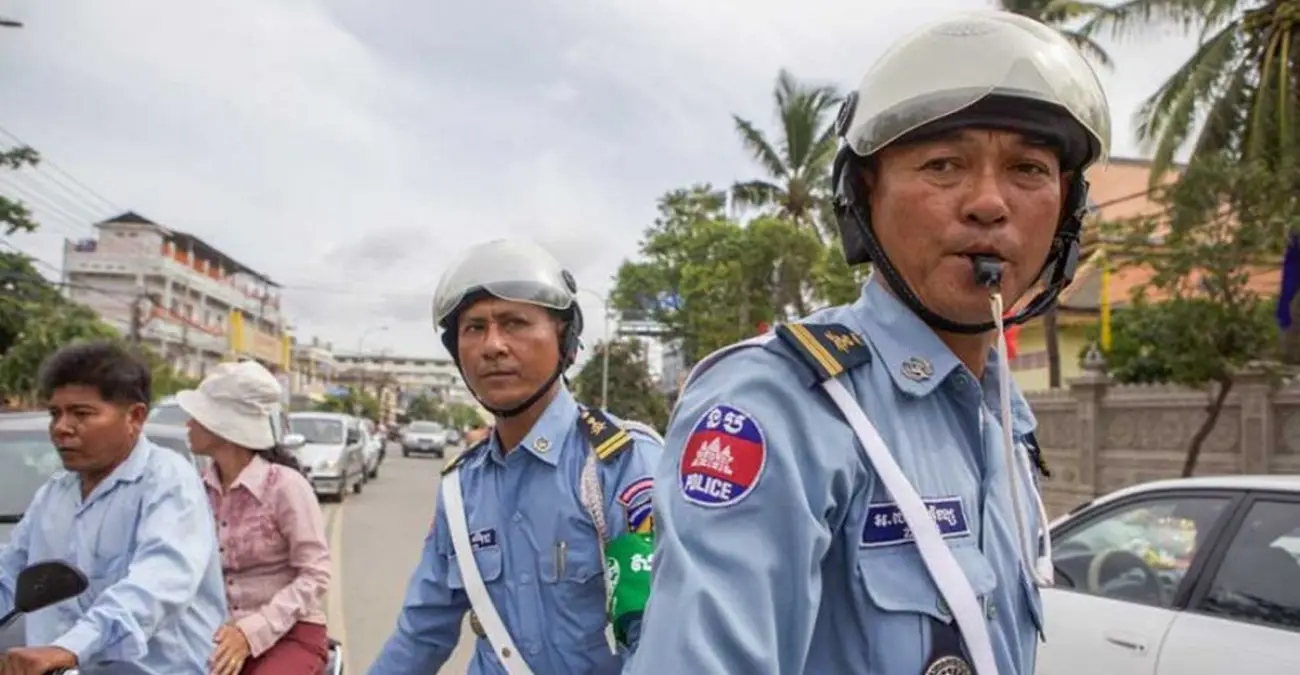In Cambodia, where traffic accidents remain a pressing public safety concern, the government is intensifying efforts to tackle excessive speeding, identified as the leading cause of road crashes. Speaking at the 16th annual National Road Safety Week in Prey Veng province, Minister of Interior Sar Sokha emphasized stricter enforcement of speed limits as a critical step toward reducing the national road toll, which claimed 1,509 lives in 2024 alone.
A Persistent Challenge on Cambodia’s Roads
Recent data from the Ministry of Public Works and Transport paints a sobering picture of road safety in Cambodia, though it also hints at progress. In the first quarter of 2025, authorities recorded 543 traffic accidents, a significant 30% drop from the 781 cases reported during the same period in 2024. Fatalities also declined, with 348 deaths—a 10% reduction from the previous year—while injuries fell by 34%, or 367 fewer cases. Despite these improvements, the numbers remain alarmingly high for a country striving to modernize its infrastructure and enhance public safety.
Excessive speed stands out as the dominant factor in these incidents, contributing to 51% of accidents in the first quarter of 2025. Other causes include failure to give way (21%), not keeping to the right (10%), and dangerous overtaking (10%). Driving under the influence, often a major concern in other nations, accounted for just 5% of crashes, according to official statistics. These figures underscore the urgency of addressing speeding as the primary driver of Cambodia’s road safety crisis.
Speed Limits as the “Antidote”
At the National Road Safety Week event, Minister Sar Sokha, who also chairs the National Road Safety Committee (NRSC), framed speeding as a national “illness” that demands a robust cure. “If we work together to reduce the illness we suffer from the most – which is speeding, at 51% – I believe we can bring the number under 1,000 [deaths per year] within the next two to three years” he said. While acknowledging that even 1,000 deaths annually is still too many, Sokha stressed that development must go hand in hand with law enforcement to protect lives.
Sokha’s comments reflect a broader push by the Cambodian government to prioritize road safety amid rapid urbanization and increasing vehicle ownership. As the country continues to develop its road network—often characterized by narrow, poorly maintained highways and a mix of motorbikes, cars, and heavy trucks—enforcing traffic laws has become a critical challenge. The minister’s call for stricter speed limit enforcement signals a shift toward proactive measures rather than reactive responses to accidents.
Public Backlash and the Role of Enforcement
One of the more contentious aspects of this policy is the public’s perception of traffic fines. Many Cambodian drivers have criticized traffic police for issuing speeding tickets, often viewing officers as more interested in generating revenue than ensuring safety. Sokha addressed this directly during his speech, urging the public to reconsider their complaints. “If you don’t speed, no one will fine you. The fines are not based on visual estimates – they are verified by radar. So rather than blaming traffic officers or law enforcement, who are seen as some kind of virus, people should realize they are the ones healing the ‘illness’ of speeding” he said.
This defense of enforcement highlights a deeper tension between state authority and public trust in Cambodia. For many citizens, especially in rural areas like Kampong Speu province—where a tragic February accident in Phnom Sruoch district claimed three lives—encounters with traffic police are often associated with frustration rather than protection. Yet Sokha’s argument is clear: adherence to speed limits is not just a legal obligation but a matter of personal and communal safety. If drivers comply, he noted, there would be no need for fines in the first place.
Broader Context of Road Safety in Cambodia
Cambodia’s road safety challenges are not unique in Southeast Asia, where rapid economic growth often outpaces infrastructure development and regulatory frameworks. Neighboring countries like Thailand and Vietnam also grapple with high road fatality rates, often linked to speeding, inadequate helmet use, and driving under the influence. However, Cambodia’s situation is compounded by systemic issues, including limited public awareness of traffic laws and inconsistent enforcement outside urban centers like Phnom Penh and Siem Reap.
The annual National Road Safety Week, now in its 16th iteration, aims to bridge this gap by raising awareness of the risks associated with reckless driving. The event serves as a platform for government officials, civil society organizations, and community leaders to engage the public on the importance of responsible road behavior. This year’s theme in Prey Veng province underscored a collective message: reducing the road toll requires everyone—drivers, pedestrians, and authorities—to play their part.
International organizations have also taken note of Cambodia’s efforts. The World Health Organization (WHO) has repeatedly highlighted the need for stronger road safety measures in low- and middle-income countries, where over 90% of global road traffic deaths occur. In its 2023 Global Status Report on Road Safety, the WHO praised Cambodia for legislative steps like mandatory helmet laws for motorbike riders but noted that enforcement remains inconsistent. Sokha’s renewed focus on speed limits could, if effectively implemented, address one of the critical gaps in the country’s safety framework.
Economic and Social Impacts of Road Accidents
Beyond the tragic loss of life, traffic accidents in Cambodia carry significant economic and social costs. The Asian Development Bank (ADB) estimates that road crashes cost the country millions annually in medical expenses, property damage, and lost productivity. For a nation where many families rely on a single breadwinner, the death or injury of a loved one in a preventable accident can plunge households into poverty. In rural areas, where access to healthcare is limited, the aftermath of crashes often leaves survivors with lifelong disabilities and little support.
Moreover, the high incidence of accidents deters tourism, a vital sector of Cambodia’s economy. Visitors to popular destinations like Siem Reap, home to the Angkor Wat temple complex, or the coastal town of Sihanoukville often cite chaotic traffic as a major concern. While the government has invested in road improvements to boost connectivity and attract foreign investment, ensuring safety on these roads remains a prerequisite for sustainable growth.
Looking Ahead: Challenges and Opportunities
As Cambodia sets its sights on reducing annual road deaths to under 1,000 within the next few years, the path forward is fraught with challenges. Strengthening enforcement will require not only technological tools like radar and speed cameras but also training for traffic police to ensure fairness and transparency. Public education campaigns must complement these efforts, fostering a culture of compliance rather than resentment toward fines.
At the same time, the government faces the task of balancing enforcement with infrastructure upgrades. Many of Cambodia’s roads, particularly in rural provinces, lack proper signage, lighting, and pedestrian pathways, contributing to accidents regardless of speed. Addressing these structural issues will demand significant investment and coordination between ministries—a tall order for a country with competing development priorities.
For now, the message from National Road Safety Week resonates across Cambodia: safety is a shared responsibility. As Minister Sokha and the NRSC push for stricter speed enforcement, the question remains whether public attitudes toward traffic laws will evolve in tandem with policy changes. Only time will tell if these measures can truly heal the “illness” of speeding and bring lasting change to the nation’s roads.
















